A glass of Home
Shrouded in a thick winter mist, the hillside is neatly striped with rows of grapevines. Further down, like a shimmering silver ribbon, the river Nahe meanders through the valley, where it narrows downstream from Bad Kreuznach. This is where you will find the region’s best wine-producing sites, nine of which belong to the Dönnhoff wine-growing estate. The ground is covered with slate so delicate it crumbles at the slightest touch. Behind a small lattice gate lies the entrance to Hermannshöhle (Hermann’s Cave), a copper gallery in recent times, and, as legend would have it, a sacred site dedicated to the Roman God Mercury in ancient times. Some of the world’ s best Rieslings come from here, winning countless awards as well as lavish praise from experts.
Cornelius Dönhoff ist the owner of the long-established family estate has dark shadows under his eyes. He has just returned from New York, where he presented his wines to the sommeliers of some of the city’s top-notch restaurants. Riesling is en vogue in the USA, and while the Spätlesen varieties with their residual sweetness which the Nahe region is famous for still enjoy wide popularity, the dry varieties which they also make here seem to be catching up. “What makes Riesling so interesting as a grape variety is that it can range from bone-dry to decadently sweet, and both extremes work. It can have an infinite variety of flavours because it simply tastes of its origin”, says Dönnhoff.
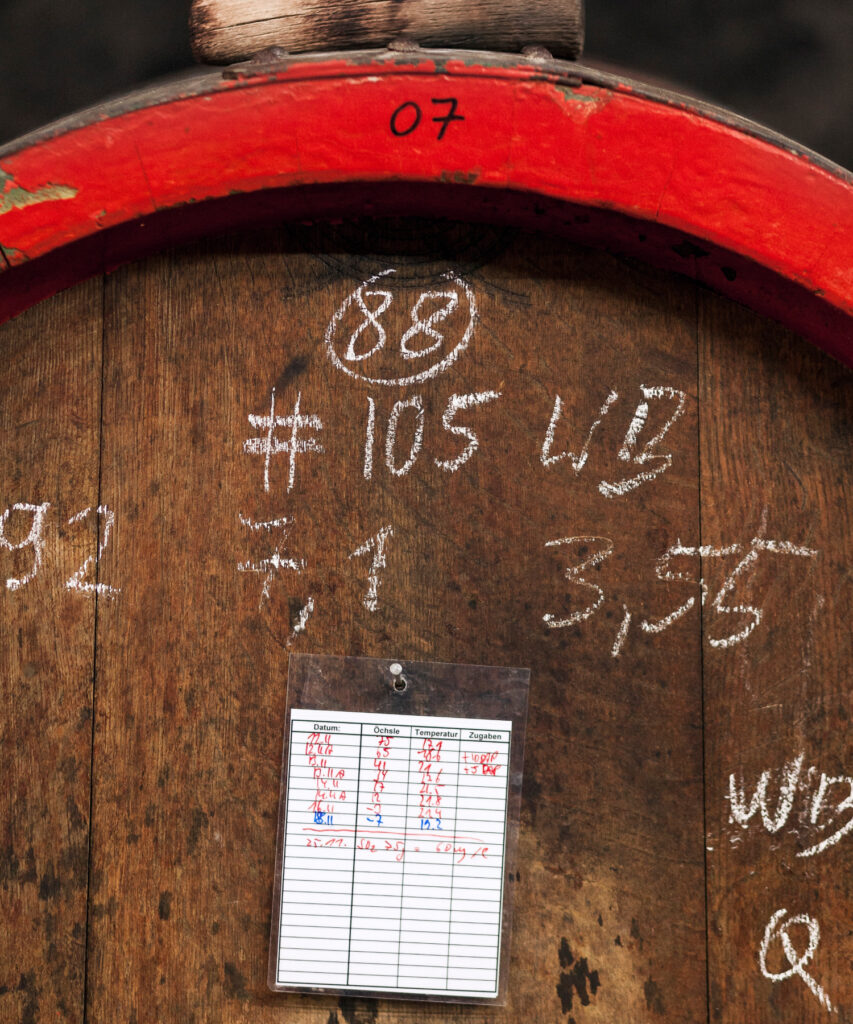
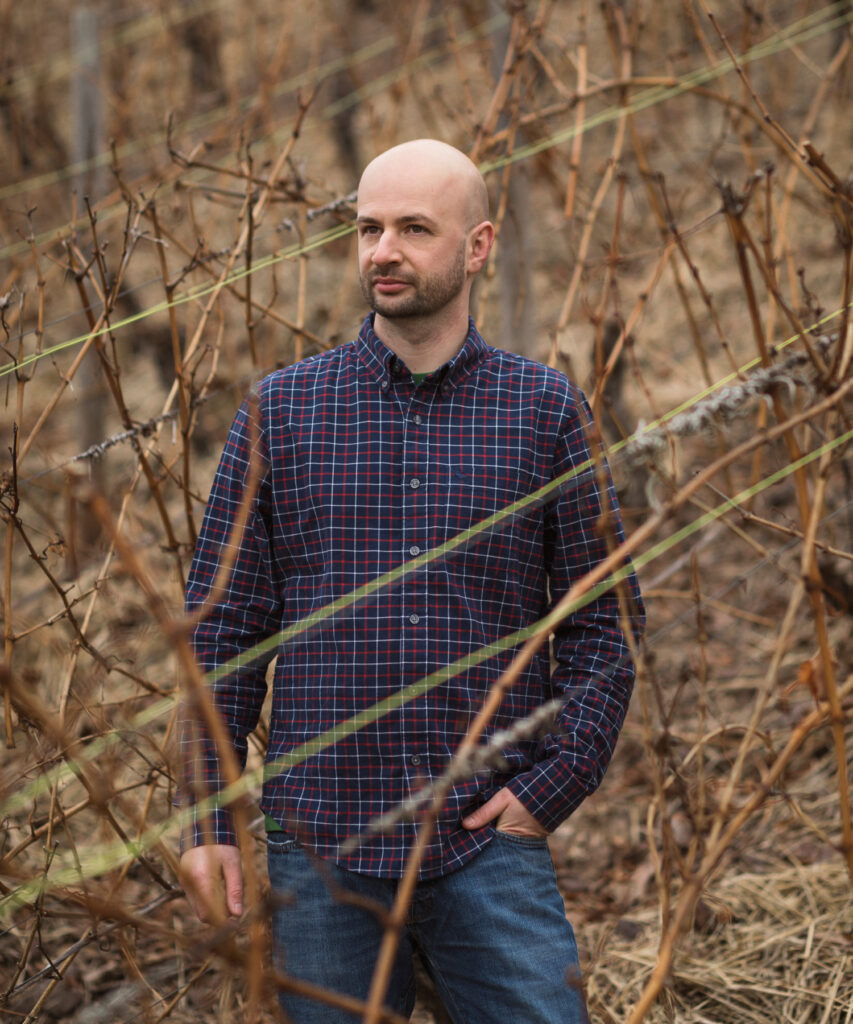
When speaking of his wines, Cornelius Dönnhoff, a man not given to trendy marketing jargon, carefully avoids the overused term ‘Terroir’ – meaning soil. When it does slip out inadvertently, he seems almost embarrassed, quite unduly so, however, for only few master the art of bringing the Terroir to life on the palate as the Dönnhoffs do. Riesling is a wine that resists globalisation, he continues, a glass of home so to speak, for Terroir, as a cachet of good wine, is considered a counter-movement to the uniformity in taste typical of mass-produced, cellar-made wines. But of course terroir means more than “those stones lying scattered about”, explains Dönnhoff. In addition to type of soil, weather conditions also play a determining role – and human influence. “We don’ t let the plants do whatever they want, you see”, he adds. What Dönnhoff modestly refers to as ‘human influence’ in fact requires high-precision craftsmanship, experience and a clear vision of the wine that one wants to make. From the cutting of the vines in winter to the day of harvest in autumn to the treatment of the must in the barrel, an infinite number of decisions have to be made along the way, each of them affecting the the final outcome.
When Cornelius Dönnhoff ’s great-great-grandfather, Hermann Dönnhoff, established the Weingut Dönnhoff as a farm over 200 year ago, winemaking was merely a side-activity as an occasional source of income. Cornelius’s father, Helmut, was the first to give up farming in order to dedicate himself to winemaking. And that was at a time of crisis for German wines. The 1950s and 60s saw an increase of cheap mass wines for which the steep slopes of the Nahe valley were too labour intensive. The 1971 wine law brought an extension of the term ‘Lage’ (site) and the definition of quality levels so that even sweetened blends could be marketed as great wines. Finally, the diethylene glycol wine scandal did the rest to cause lasting damage to the reputation of German wines in the mid 1980s.
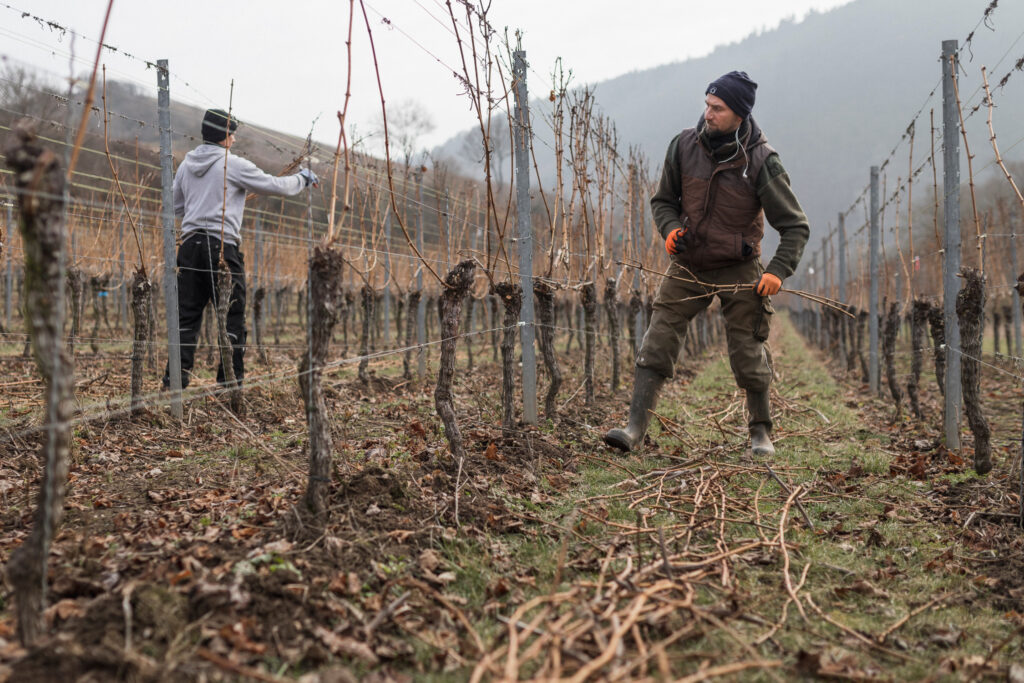
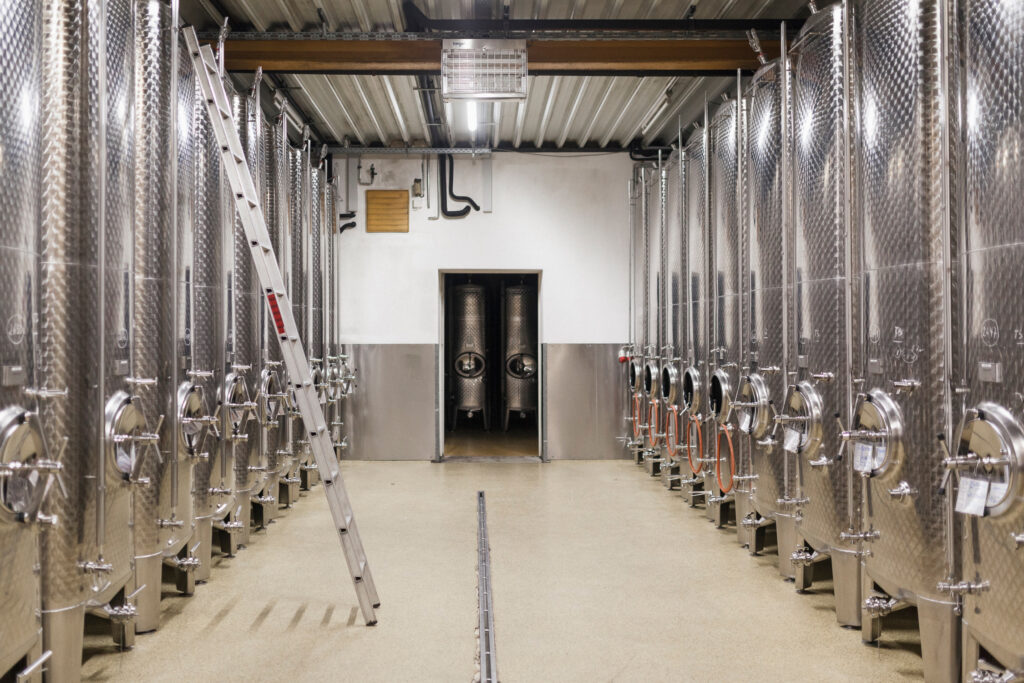
Helmut Dönnhoff stuck to his guns. He pursued his own high quality standards in winemaking by focussing on simple elegance rather than on sensational tastes. Since they were not always easy to sell, he began tapping the US market, which is now the winery’s main export market. In fact, they could sell entire vintages to the USA before they are even harvested – if they wanted to. Over the years, Helmut Dönnhoff gradually acquired more and more vineyards – premium sites only, the kind which a simple peasant family like his could never have dreamed of in those days, as they were reserved for bourgeois families. Helmut Dönnhoff started off with about six hectares, today he has 28. Bit by bit, he grew from being an insider tip into the “Riesling king of the Nahe.” Awards were piling up. The Gault Millau deemed his business “Winery of the year”, the Feinschmecker awarded the Rieslingpreis many times and the famous American wine critic Robert Parker gave the Eiswein of the house 100 points out of 100. “Nobody knows Nahe but everybody knows Dönnhoff”, wrote the US magazine Wine Spectator.
As for his son, he is a trained viticultural engineer and has worked for winemakers in Australia and New Zealand. In 2007, he quietly took over the winery while his father was in the spotlight. “I do steal a bit of his thunder”, his father admits apologetically. “Well”, his son replies, “I’ m quite happy with that. Fame does not interest me.” They didn’ t even make the take over public. “We have a public presence, so there is always someone waiting for a chance to put us down. For five years, the change went utterly unnoticed, until in 2015 that chance came for Gault Millau, who downgraded the winery that year, claiming that the wines had become “too complacent”. Cornelius Dönnhoff takes it lightly. “So much is being written, if I took it all to heart, I wouldn’t be having any fun anymore.”
Fun is hardly the right word to describe his relationship with his profession. One should rather call it passion. The same applies to his father, who still works on the winery. It is a constant struggle for the right balance. “A good wine should not be only sour or only sweet, it is not supposed to have too much or too little alcohol. Let’s compare it with a piece of music – if one single instrument does not hit the right note, the whole piece sounds wrong.”
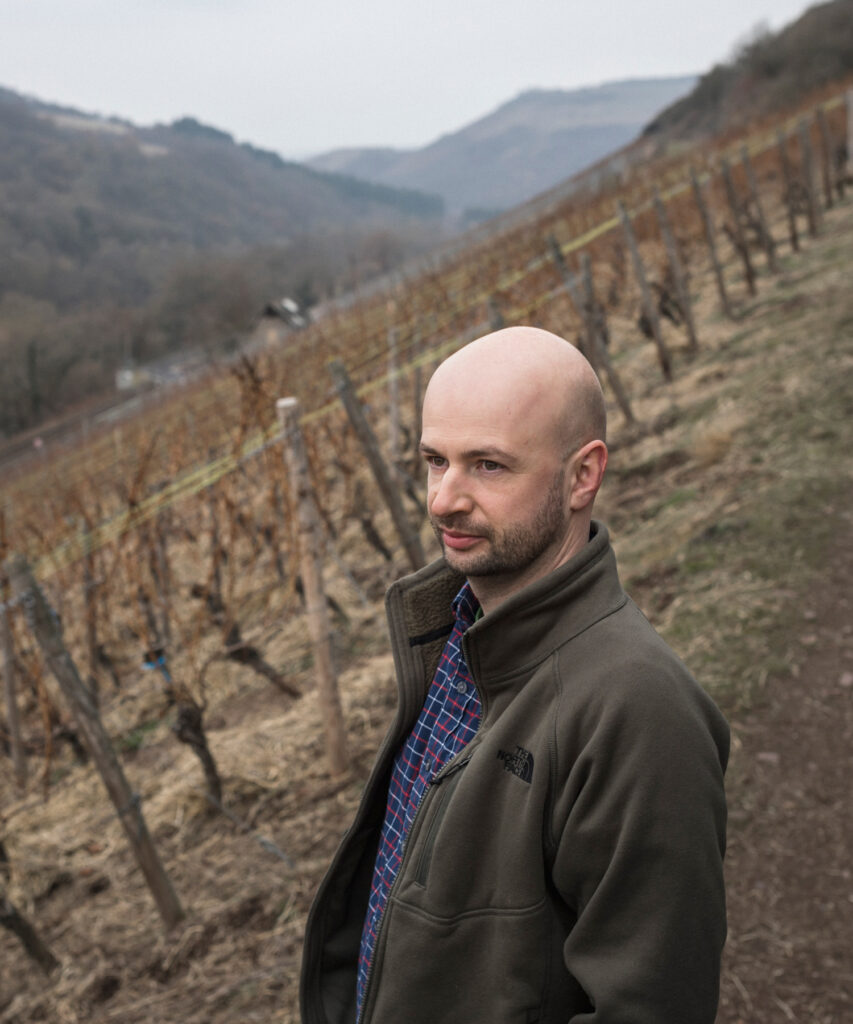
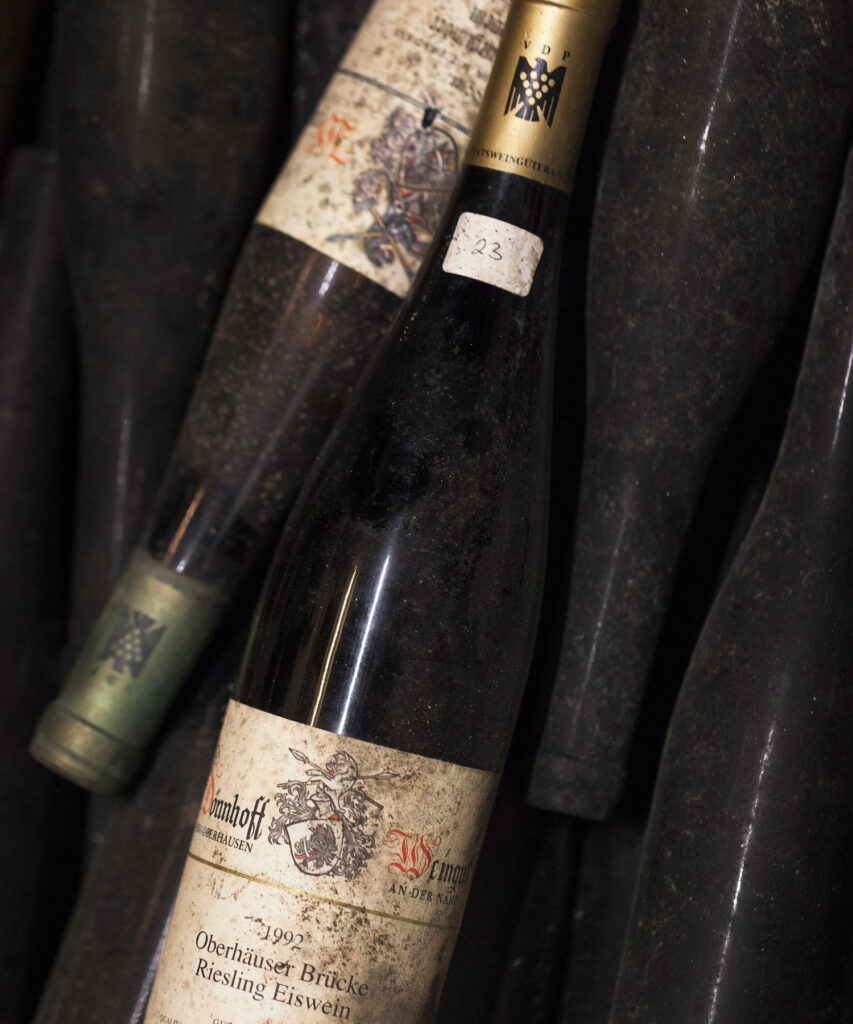

Wine production is always about catching the right moment. Nature and the weather remain unpredictable. That trembling anxiety, fear, hope, those things have not changed in spite of modern technology. Only last year, on the night to the 28th of April 2016, the Dönnhoffs hastily had to put up 500 candles to keep the nightfrost from harming the delicate shoots. On another occasion, they harvested the grapes – which were covered with frost just at the right time – for the Eiswein wearing headlamps. This might seem rather romantic to a city slicker who, his first cup of coffee of the day in hand, switches on his computer around nine a.m. But for the descendant of a winemaking family it means frustration and frosty fingers. “When I was a teen, I didn’ t want to become a winemaker at all”, admits Dönnhoff. “I could see clearly how much work that is. We work with nature and nature doesn’t care if it’s Sunday or your birthday.” He has since made up his mind and nowadays he answers the question whether winemaker is a dream job with: “It is for me.”
What finally flows out of the bottle is not simply the taste of the landscape as much as Dönnhoff’s vision of it. One can compare it to a painter whose accomplished artistic skills allow him to create a picture of a landscape that looks natural, not crafted. In order to fulfill that vision, each plot is developed individually and blended subsequently. Bottles are lined up just like in an alchemist’s laboratory. What is the quest for the Theory of Everything to the alchemist is the quest for the right ratio to the winemaker by trial and error. This requires intuition. “One cannot learn winemaking from a book, one needs a feel for the landscape”, says Dönnhoff. “One has to feel what a vineyard can really be capable of.”
This article has first been published in the print edition of 30 Grad magazine in spring 2017.